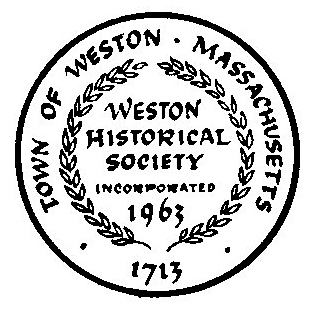

The society's tercentennial exhibition was designed by Will Twombly of Spokeshave Designs. Graphic design was by Mary Orr of Orr Studios. The exhibit included a timeline and nine thematic areas: agriculture, industry, professionals, education, commerce, estates, summer pleasures, Weston in wartime, and post-war growth.
Pictures from the Exhibition
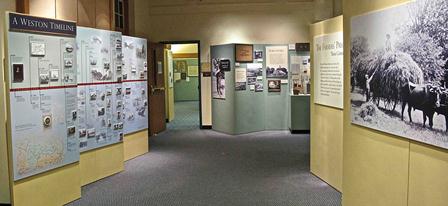
The Timeline and introductory panels
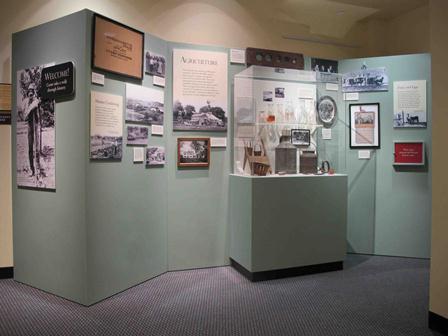
The Agriculture section
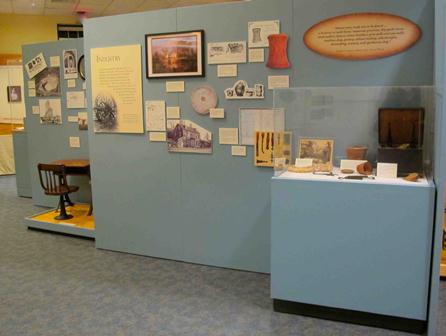
A view of the Industry section
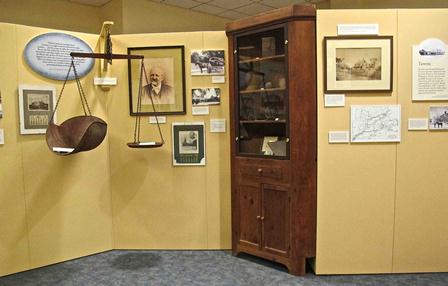
A view of part of the Commerce section
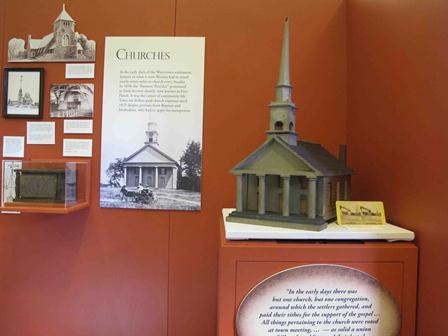
The Churches section
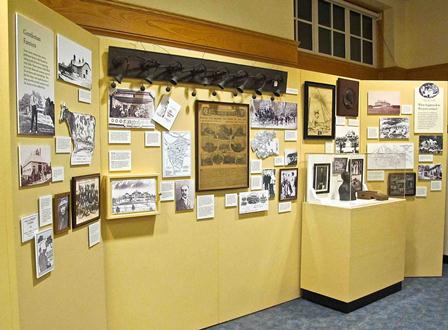
A view of the Estates section
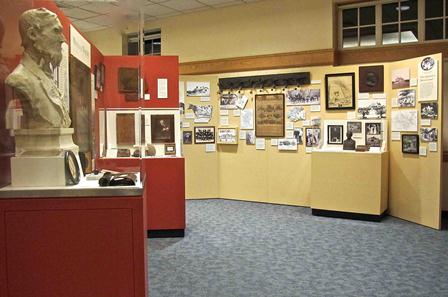
A view of both Estates and War
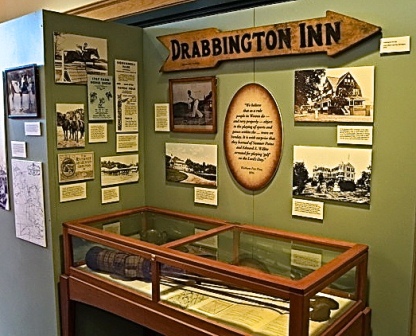
A view of the Summer Pleasures section
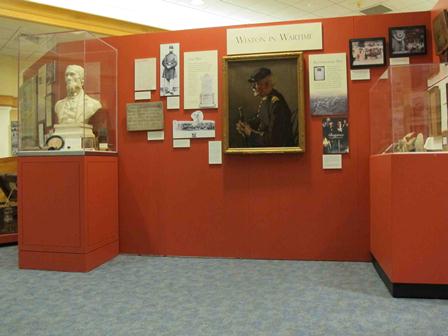
Revolutionary War and Civil War panels
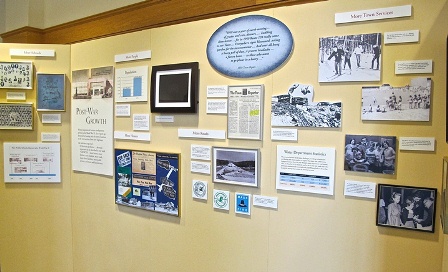
A view of the Post War Growth section
The Committee and Others at Work
The six-member exhibition committee was chaired by Pam Fox and included Mary Gregory, Mary Marder, Tania Deary, Rebekah Gardiner, and Robin Reisman. Each member was responsible for one or more of the exhibit themes, including the research, layout of the display panels, and label content.
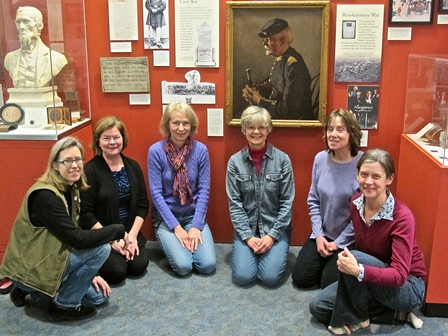
The Exhibit Committee, known among themselves as the Exhibitionists
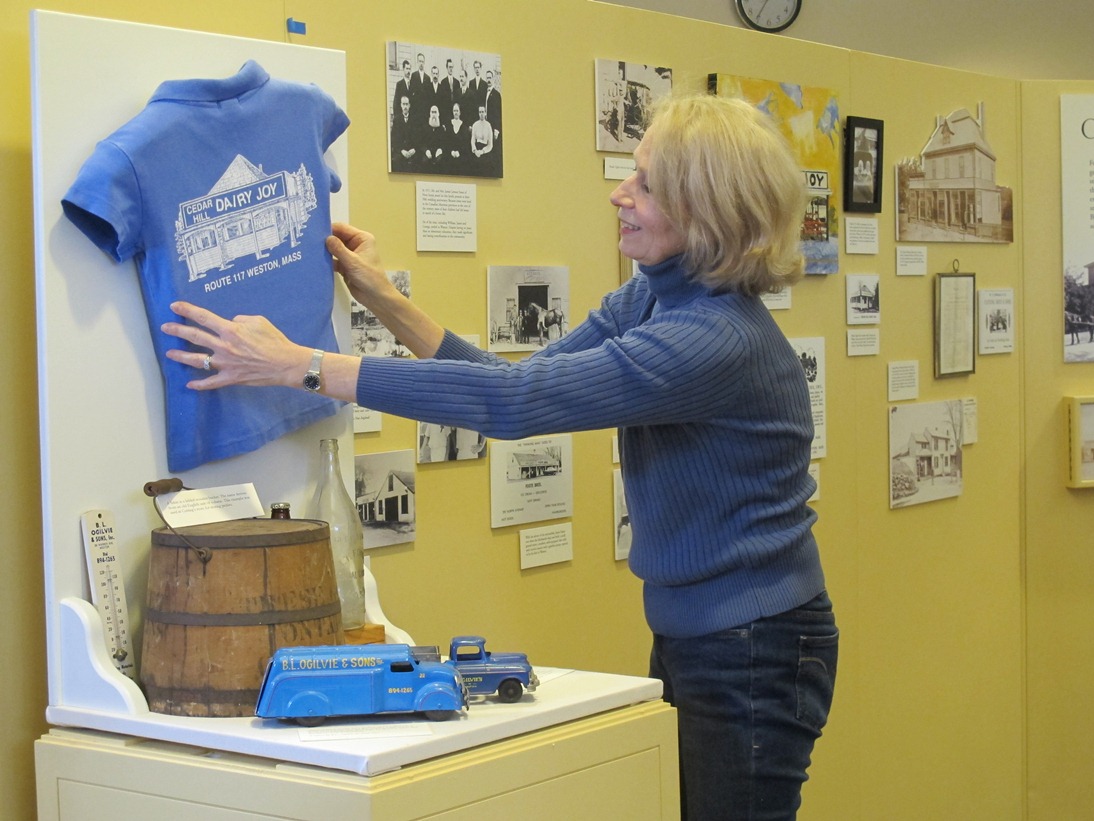
Tania Deary arranging a case in the Commerce section
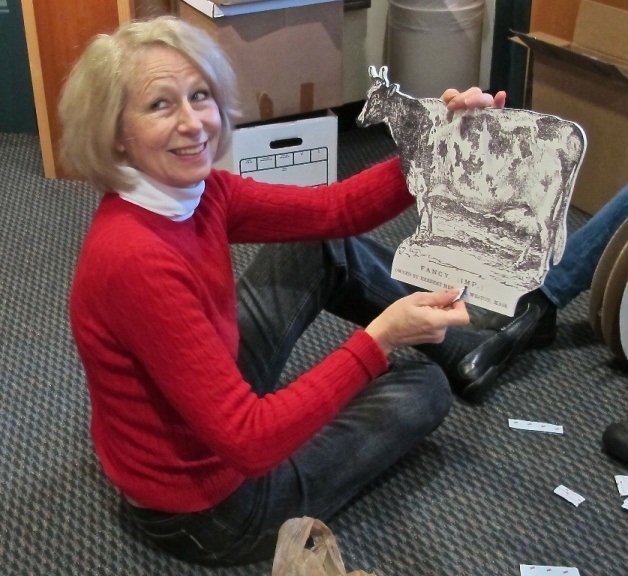
Tania Deary holding a cut-out image of Fancy the cow.
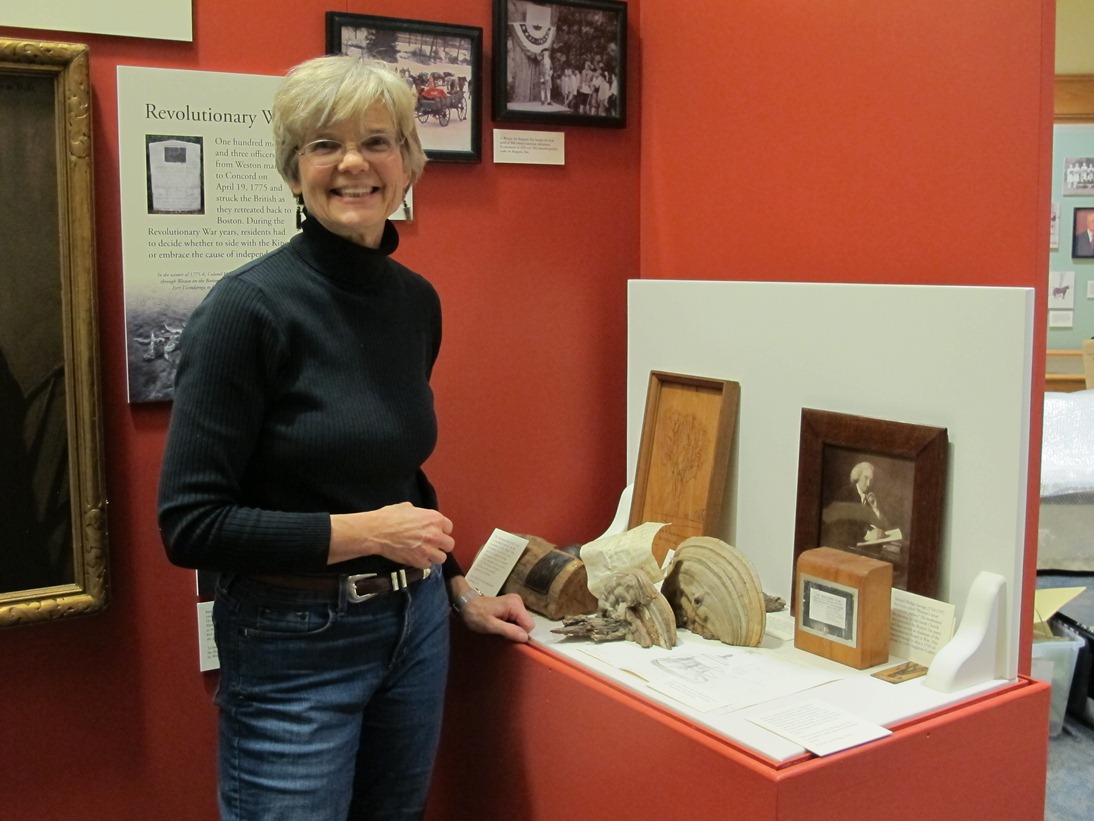
Pam Fox arranging artifacts in the Burgoyne Elm case

Rebekah Gardiner steaming the Girl Scout uniform

Mary Gregory laying out a panel in the Industry section
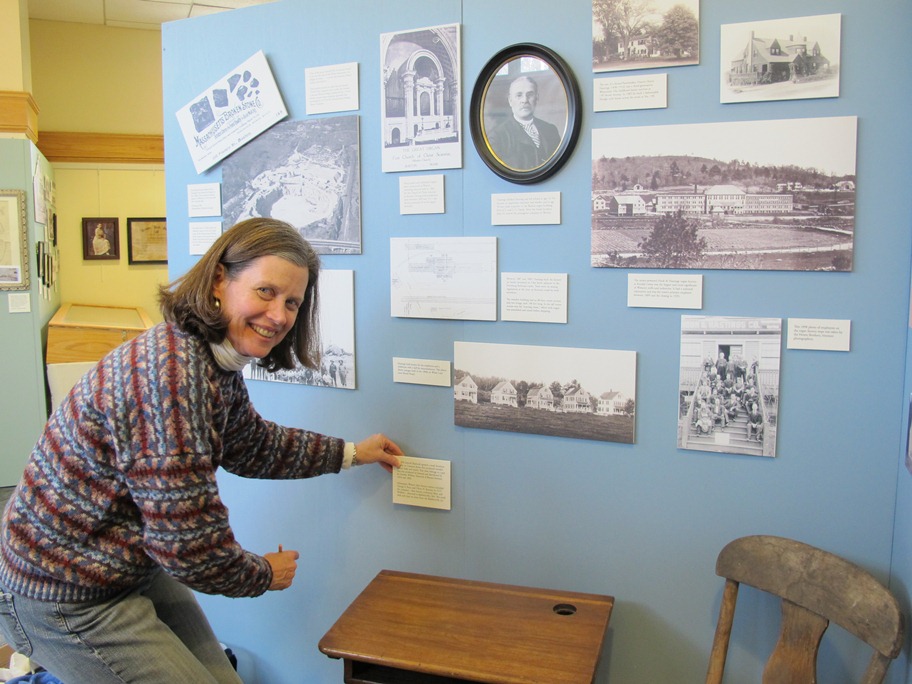
Mary Gregory putting up a panel in the Industry section
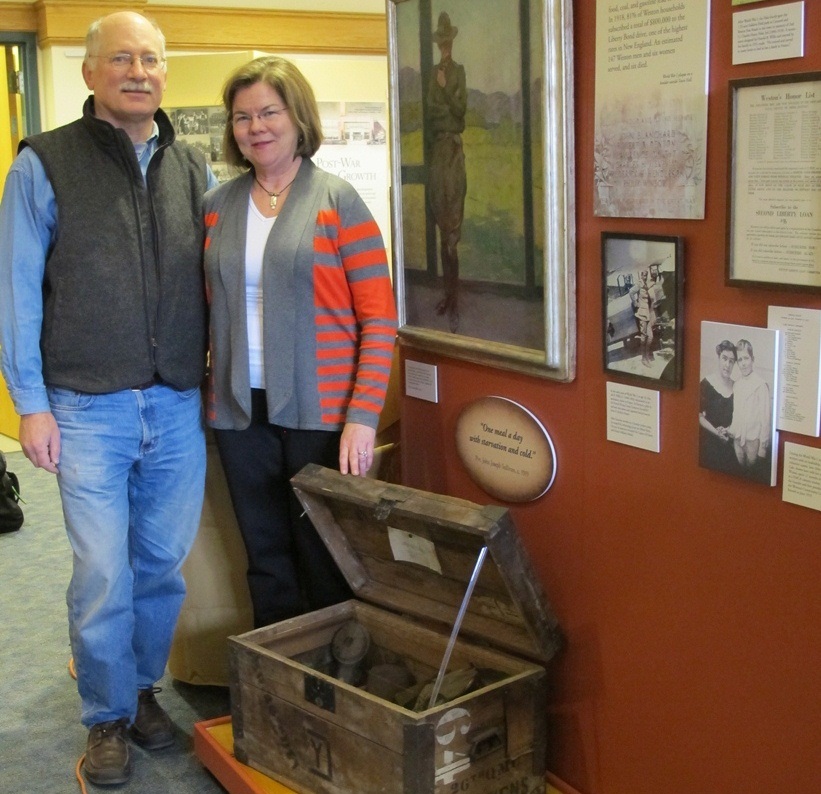
Mary Marder with husband Mark, who helped the committee enormously
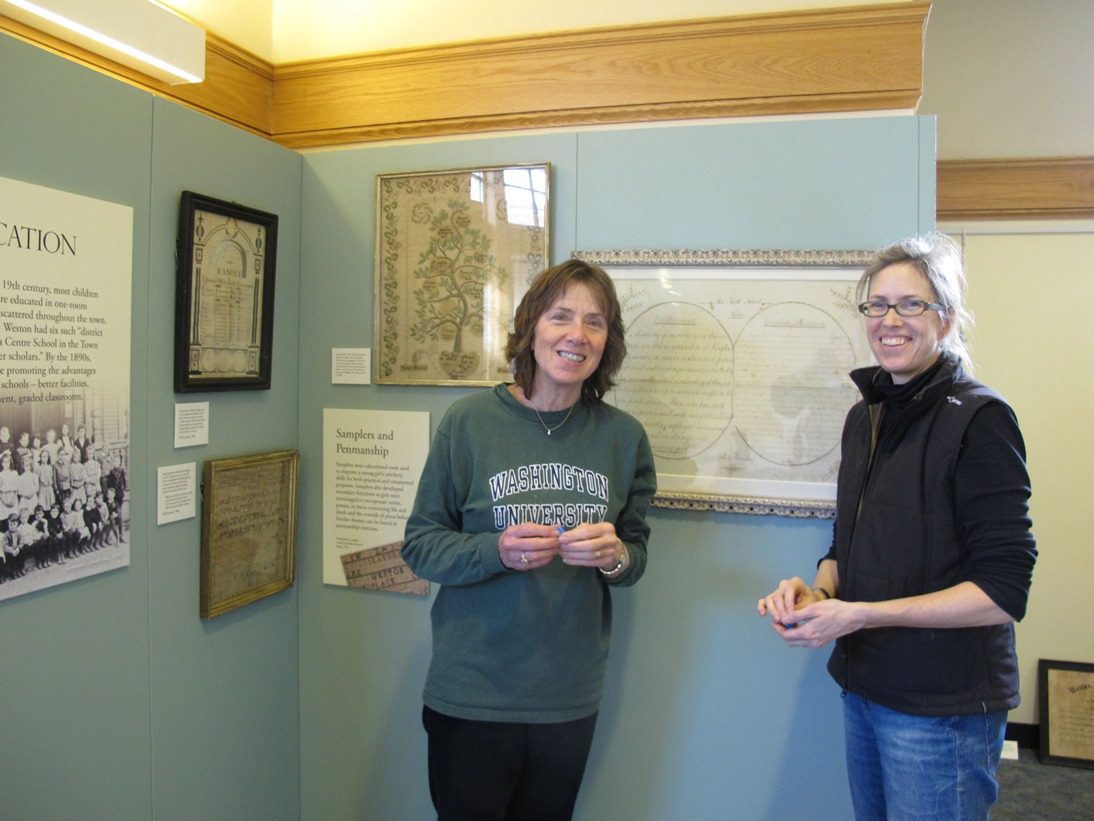
Robin Reisman and Rebekah Gardiner in front of one of the Education panels
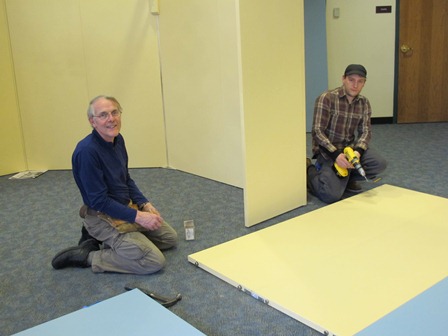
Will Twombly, the exhibit designer, with his son Alex, assembling panels
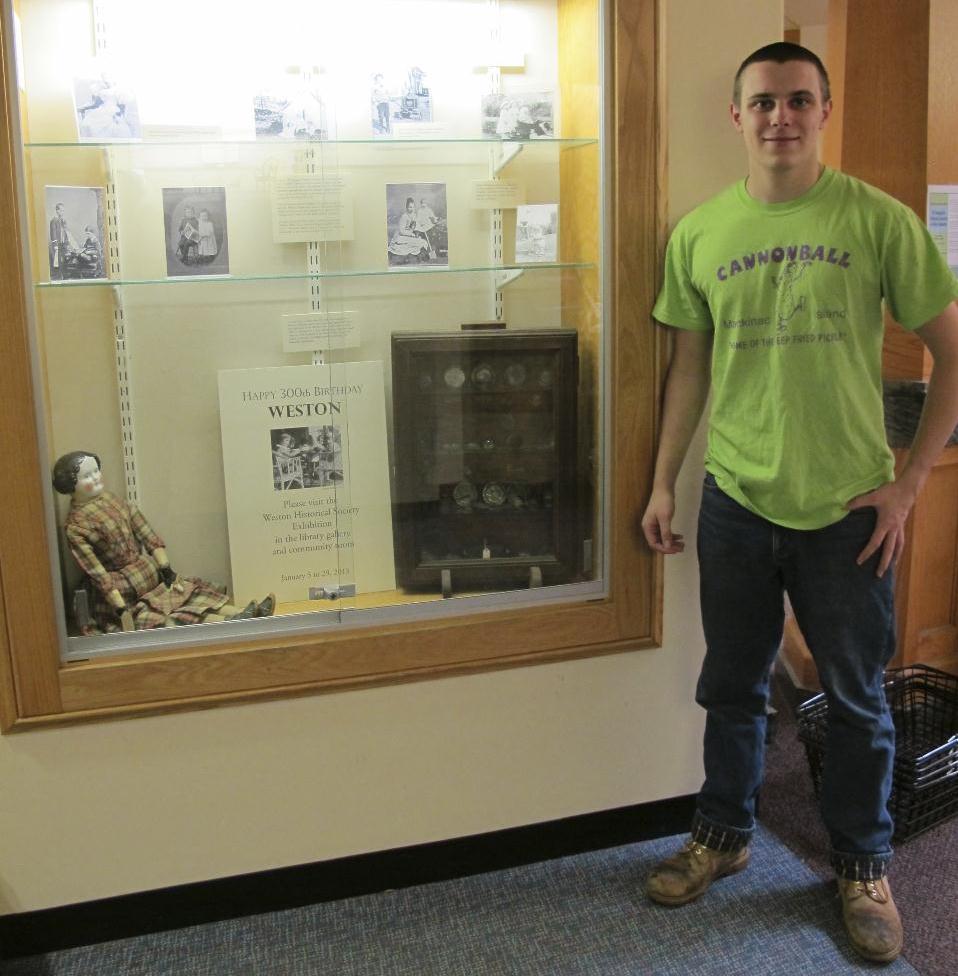
John Saylor with the Children's Case, which he designed
Objects in the Exhibition
Most of the objects in the exhibition were from the collection of the Weston Historical Society. Among the highlights were three paintings by Weston artist Gertrude Fiske, an 1890s golf bag and clubs used at Weston Golf Club in its original location on Church Street, and a World War I trunk with its complete contents including gas mask, communication device, and memorabilia (a map of Paris, French Phrase Book, military papers, and dozens of other paper items displayed in one of the nine cases.
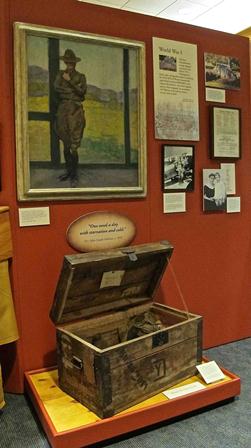
A painting by Gertrude Fiske of a World War I soldier and a WW I soldier's trunk

Pam Fox surrounded by various objects in the Estates section of the exhibit
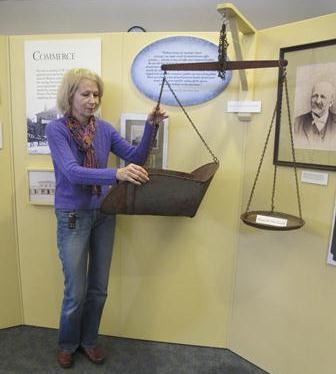
Tania Deary balancing the scales from Cuttings store
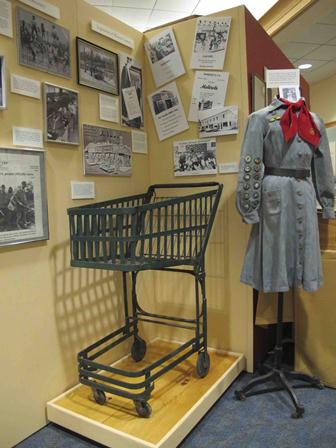
A 1950s era grocery cart and a 1940s Girl Scout uniform displayed in the Post War section of the exhibit
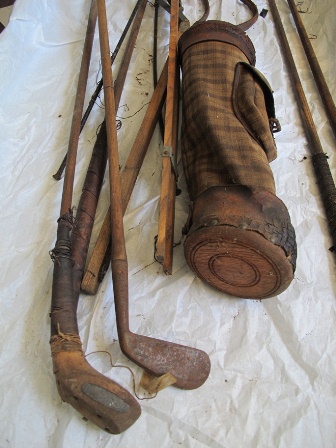
The 1890s golf clubs and bag before restoration
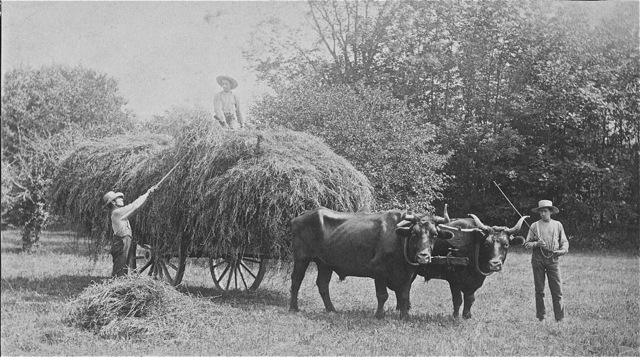
The Farmer's Precinct:
Three Centuries of Weston History
The Weston Historical Society helped kick off Weston's 300th Anniversary
with a major exhibition The Farmers' Precinct: Three Centuries of Weston History at the Weston Public Library
from January 5 to 29, 2013. Members' opening was Sunday, January 6.
Planning had been underway since the fall of 2011, when a committee of six
volunteers began examining the society's collection, developing themes, and choosing objects.
The hard-working planners
unpacked boxes and emptied closets and in the process discovered many unusual objects.
Themes were chosen to illustrate Weston's evolution from an agricultural community
to a modern suburb: Agriculture, Industry, Commerce, Education, Estates, Summer Pleasures, Weston in Wartime,
and Post-War Growth. While Weston is not generally thought of as having much industry, a wide variety of products
"made in Weston" were displayed: pots from Hews Pottery, thread from the Coolidge, Sibley, & Treat
mill, a "butter and cheese drill" from a Crescent Street mill,
school furniture, and wooden organ pipes made at the Hook & Hastings Co. organ factory.
At the May 2012 Town Meeting, residents voted Community Preservation Act funds up to $9500
for conservation of objects to be included in the exhibition. A paper conservator worked on an 1805 penmanship
exercise done at "Miss Tufts School" in Weston, and painting conservators cleaned important
oil paintings. An objects conservator, Nina Vinogradskaya, worked regularly with committee volunteers
to clean objects using a special hepa vacuum cleaner and moistened Q-tips. Exhibit cases were donated by the Concord Museum and
Peabody Essex Museum. After its library debut, a traveling version of the exhibition went to other public venues in Weston.
The exhibition was sponsored in part by grants from the Weston 300 Committee, Weston Public Library Trustees,
Friends of the Weston Public Library, and Weston Cultural Council, which is a local agency supported by the Massachusetts
Cultural Council, a state agency. Underwriters included Highland Meadows, Weston Landscape and Tree Company,
and private individuals. Other business sponsors were Georgia Foote and Kathy Shepard, Coldwell Banker, Priscilla Hindmarsh and
Deena Powell, Coldwell Banker, and Omni Supermarket. Special thanks also to B.L. Ogilvie and Sons, Florentine Frames,
Personal Cleaners and Tailors, Doug MacDougall, Adson Brito, and Dan Bryden.